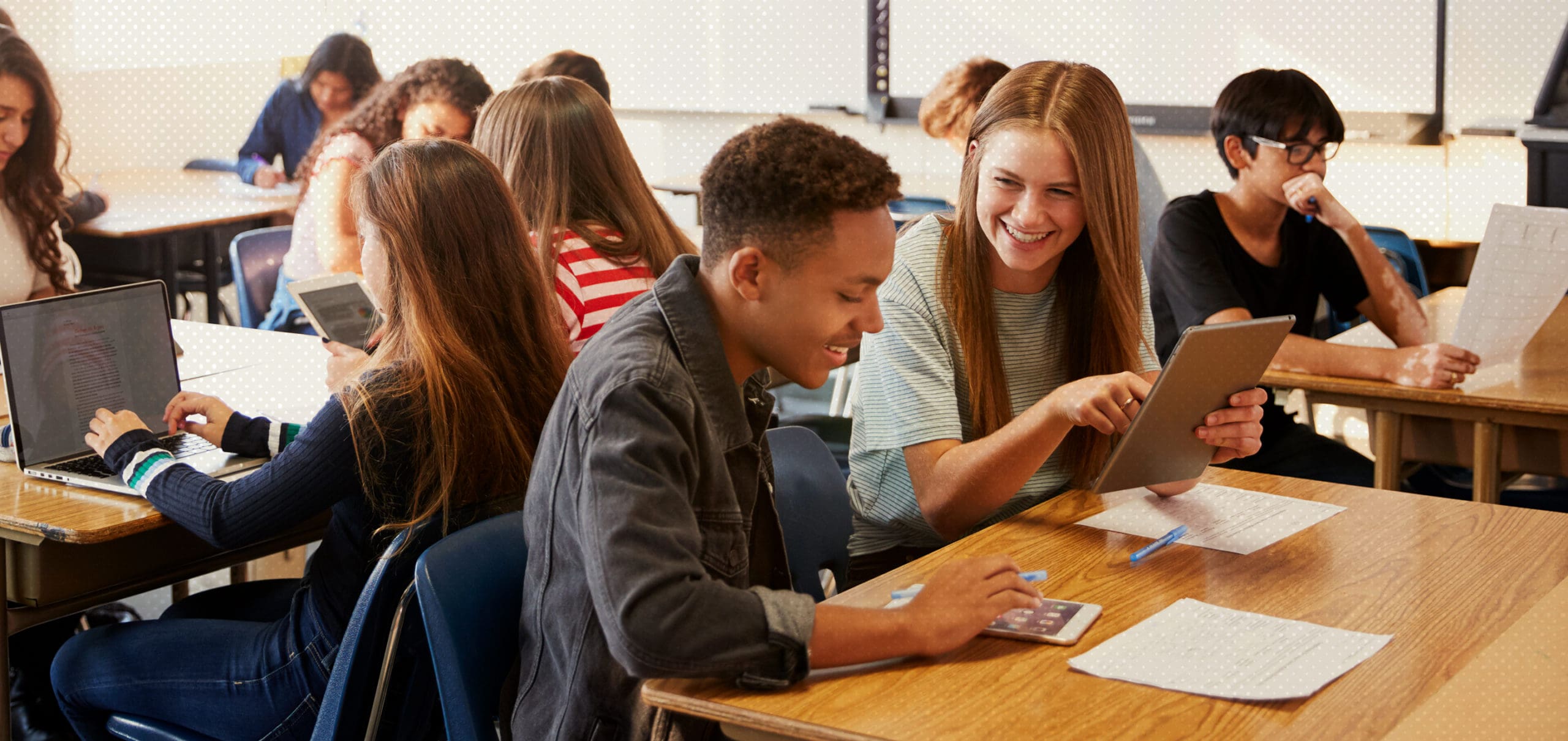Education is not one size fits all. This is why educators are constantly looking for ways to better engage and serve their students. While the idea of personalized learning isn’t a new concept, it has become more popular as educators determine how to implement it.
And one of the best ways is through blended learning.
Defining blended learning
According to the Clayton Christensen Institute, blended learning is “a formal education program in which a student learns at least in part through online learning…[and] at least in part in a supervised brick-and-mortar location away from home.” What this essentially means is that students will still attend a traditional school, but may take one or two courses online in the classroom, a computer lab, or in the comfort of their home.
This approach is as beneficial to educators and administrators as it is to the students. Not every student engages with curriculum in the same way, and blended learning allows teachers to personalize the experience so students get the most out of their education.
What are the benefits of blended learning?
While there are plenty of benefits to blended learning, it all boils down to this: expanding student opportunities.
Blended learning fills in the gaps that may be keeping your students from reaching their fullest potential. Whether it’s offering a high school course you don’t have the staffing to support, or providing students with access to college courses that will accelerate their path toward university admission, implementing a blended learning model into your curriculum is sure to offer a concrete solution to whatever problem you’re trying to solve.
How is blended learning implemented?
The Clayton Christensen Institute describes four different models that a majority of blended learning programs fall into: rotation model, flex model, a la carte model, and enriched visual model.
These models range from “…a course in which students rotate on a fixed schedule between learning modalities…” to “…a course that a student takes entirely online to accompany other experiences that the student is having at a brick-and-mortar school or learning center.”
Having different models makes it easy to choose the one that best fits your needs and gives your students the tools they need to succeed. If you’re looking for a way to introduce blended learning, consider partnering with a virtual high school, such as ASU Prep Digital.
ASU Prep Digital works with high schools to design blended, online or hybrid school models that will best fit students’ needs. They offer a variety of ways to expand student opportunities and improve outcomes, including:
- Providing online instruction from highly qualified high school teachers and ASU professors.
- 40+ high school and 200+ university courses for use with your teachers or ours.
- Face-to-face and web-based professional development on blended learning.
Blending learning benefits everyone, from students and instructors to school and district leaders, and there are resources available to help you enhance your students’ opportunities.
Interested in learning more about the partnerships at ASU Prep Digital? Check out the partnership page and a few success stories:
- Miami High School success story
- Pendergast Elementary District success story
- Santa Cruz Valley Union High School success story

